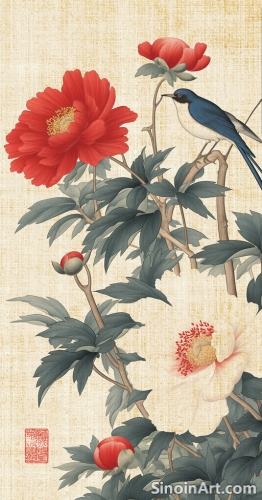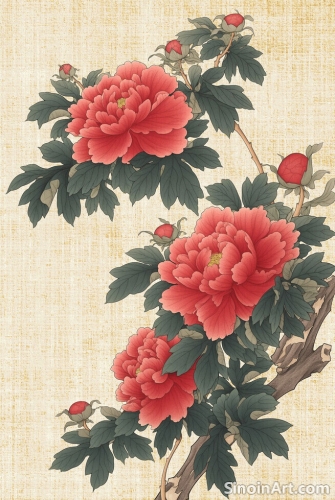Gongbi Painting as a Form of Cultural Preservation
|
Gongbi painting serves as an important tool for cultural preservation, documenting historical events, preserving traditional crafts, and communicating cultural values. The meticulous detail and historical accuracy of these works help ensure that valuable aspects of Chinese heritage are passed down for future generations. The work becomes a visual form of cultural record.  Gongbi paintings often serve as visual records of historical events, accurately portraying the clothing, architecture, and social customs of different periods in Chinese history. These works serve as a kind of time capsule, allowing the modern viewer to understand a past world.  The art form itself is a testament to the craftsmanship and techniques that have been passed down through generations of artists. The preservation of these techniques is a crucial part of maintaining the integrity of the tradition.  The subject matter of Gongbi paintings, with its emphasis on traditional symbols, motifs, and narratives, also helps to transmit cultural values and beliefs to new audiences. The careful use of symbols and traditional stories provides a visual and narrative connection to the cultural heritage. By engaging with the traditional art form, artists and viewers alike are connecting with their cultural heritage and contributing to its continued relevance and vitality. The art form becomes both an expression of culture and a way to keep those traditions alive. Ultimately, Gongbi painting plays a significant role in ensuring the preservation of Chinese cultural heritage, promoting cultural understanding, and fostering appreciation for the rich artistic traditions of the past. The art form becomes a bridge between the past and the present, allowing the traditions to live on. |
Tag : Cultural preservation, Chinese heritage, traditional art, art history, preserving culture
Related information
- Color in Gongbi: Layering and Luminosity
- Gongbi Painting and the Use of Light and Shadow
- The Influence of Gongbi on Other Art Forms
- The Challenge of Large-Scale Gongbi Painting
- Gongbi and the Court: Patronage and Artistic Standards in Imperial China
This article explores the use of color in Gongbi painting, highlighting the "ranse" layering method, the use of mineral-based pigments, the process of creating luminous effects, and the overall importance of color in conveying mood and meaning.
This article explores the subtle but skillful use of light and shadow in Gongbi painting, highlighting the use of color gradations, brushstrokes, and how these techniques contribute to creating a sense of depth, volume, atmosphere, and enhance the overall impact of the artwork.
This article explores the influence of Gongbi painting on other art forms, including decorative arts, illustration, animation, fashion, and digital art, highlighting how its emphasis on detail, linework, and color has inspired creativity across various fields.
This article explores the unique challenges of creating large-scale Gongbi paintings, including maintaining precision, acquiring specialized materials, managing composition, and the time-consuming process of layering colors and details.
The history of Gongbi painting is intrinsically linked to the imperial courts of China, where it flourished under the patronage of emperors and the elite classes. The demand for highly detailed and realistic depictions of the natural world and court life led to the development of the meticulous techniques and refined aesthetic characteristic of the Gongbi tradition. This patronage significantly shaped the evolution and preservation of this distinctive style.